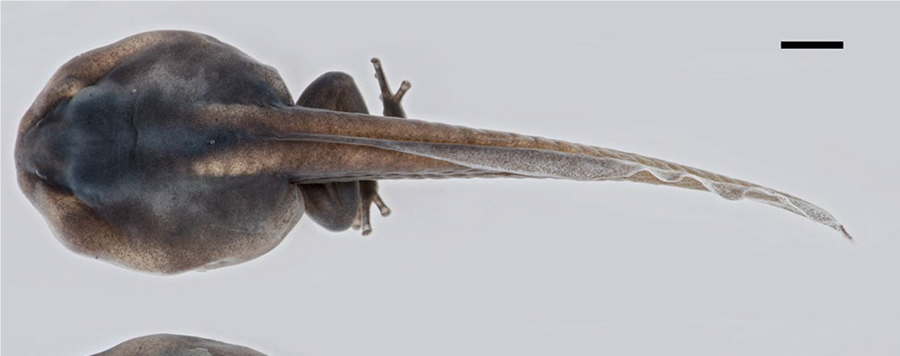
Tadpole morphological characterization of Ranitomeya variabilis (Zimmermann & Zimmermann, 1988) (Anura: Dendrobatidae), with skeleton, muscle system and inner organs
In this study, we morphologically examine larval specimens of Ranitomeya variabilis, which were breed in captivity and genetically determined to belong to the French Guiana population. We provide detailed data on the external morphology, chondrocranium, cranial muscle systems and inner organs of the tadpoles. Additionally, we provide essential characteristics for the recognition of the tadpoles of the different Ranitomeya species. The external morphology of the R. variabilis tadpoles was assessed by measurements and photographs of the specimens. Internal morphology was analyzed using μCT images, μCT-based three-dimensional reconstructions, and dissection of specimens for organ and muscle descriptions. The majority of the muscle configurations observed herein for larval specimens of R. variabilis are consistent with data presented in previous studies for larvae of other Ranitomeya species. In addition, several of the observed morphological characters are defined for different taxonomic levels within Dendrobatidae, e.g., the reduction of tectal cartilages and the insertion of the M. rectus cervicis on the third or fourth branchial arch. The absence of the anterolateral process of the ceratohyal in Ranitomeya and Dendrobates further strengthens their close relationship, in contrast to the more distantly related Epipedobates and Phyllobates where this structure is present. The absence of the M. levator arcuum branchialium I and II, the M. interhyoideus posterior and the M. diaphragmatopraecordialis might be defining traits for Ranitomeya. The specific characters observed in this study for R. variabilis, are the fusion of the superficialis and profundus portion of the musculus levator longus larvae and the absence of the parotic crista.






